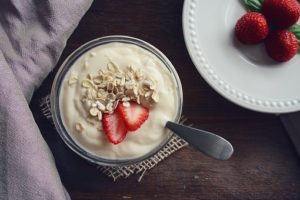 If you are like me, you like to snack. A vast majority of us eat a snack at least once or more throughout the day. We also tend to allow our children to graze throughout the day without giving much thought to it. Snacking is just as important as a breakfast, lunch, or dinner meal. Some snacks make it easy to eat too many calories throughout the day. Snacks may help keep blood sugar steady and may prevent us from over-eating during meals. Because snacks are being consumed more frequently we need to be mindful of the snacks we consume and the snacks we provide to our children.
If you are like me, you like to snack. A vast majority of us eat a snack at least once or more throughout the day. We also tend to allow our children to graze throughout the day without giving much thought to it. Snacking is just as important as a breakfast, lunch, or dinner meal. Some snacks make it easy to eat too many calories throughout the day. Snacks may help keep blood sugar steady and may prevent us from over-eating during meals. Because snacks are being consumed more frequently we need to be mindful of the snacks we consume and the snacks we provide to our children.
Maintain optimal health through snacking
- When thinking about your snacking habits, follow a healthy eating-pattern to help you and your family meets nutritional recommendations.
- A healthy eating pattern includes nutrient-dense forms of food such as vegetables, fruits, whole grains and dairy products.
- Healthy snacking includes limiting the intakes of salt, added sugar, and saturated fats.
Consider your snacking habits.
Snacking is an opportunity to include healthier foods in your diet. Be sure to make wise choices about what, when, and how your family snacks.
- Be mindful of what and how much you are eating and establish good habits.
- Mindless eating causes overeating. Pay attention to what you are eating or you may miss out on the enjoyment and taste of food.
- Sit at the table with your child to eat snacks.
- It is unsafe for your child to run around the house with food as it could cause a choking hazard.
- Sitting at the table is more relaxing and it helps to keep things calm. It allows your family to enjoy their food.
More snack, less waste
Many snacks products are pre-packaged for convenience. Making your own snacks can be healthy, cost efficient and also reduce packaging waste. To help curb hunger from one meal to the next, snacks should contain a variety of foods and beverages from each food group (whole fruits, vegetables, whole grains, lean protein, and dairy/calcium).
Some snack suggestions:
- Whole grain bread or crackers with cheese, peanut butter, or a glass of milk
- Fruit with cheese, cottage cheese, yogurt or milk
- Vegetables can be served raw with a dip or and some form of meat, fish or poultry added
- Carrot, celery or other vegetables dipped in hummus

- Smoothies coupled with some whole grain bread or crackers
- Hard cooked eggs, tomatoes, and dry crisp bread or pita chips
- Handful of nuts and dried fruit
- Water for quenching thirst
- Snacks can be homemade or made from leftovers
Snacking can be a great way to have a healthy eating plan if making wise choices about what, when, and how you snack. So, next time you reach for your snack, stop to think about what you are eating or providing for your child to eat.


Thank you for the snack ideas…..the more ideas the better my snacks.
Great ideas for making snacks count towards getting better nutrition for our kids and ourselves!